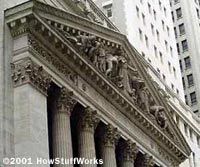Accounting Background
The most important documents that a company puts together are its financial statements. These include a balance sheet, a cash flow statement, and a profit and loss statement. These documents quantitatively describe the financial health of a company and are used by almost every entity that deals with the company, including the company executives and managers themselves.
The following financial statements are usually compiled on a quarterly and annual basis:
Advertisement
- The balance sheet gives a snapshot or bird's eye view of the company's financial situation at a given date in time. It includes assets and liabilities and tells the business's net worth.
- The cash flow statement shows cash that is coming in as well as the cash needed to go out over a period of time. It is very helpful for planning for large purchases, or to help be prepared for slow periods in the business. In simple terms, the cash flow equals cash receipts minus cash disbursements.
- The profit and loss statement (also referred to as an income statement) lists revenues and expenses. It also lists the profit or loss of the business for a given period of time. It is helpful for planning and helps to control operating expenses.
Banks review the financial statements to decide if they will lend the company money (and at what interest rate if they choose to lend it). Investors review the documents to decide if they feel confident in the company enough to invest their hard-earned money. Company managers use them to analyze the business and determine how well they are doing. Many others also use the documents, so it is critical that they are accurate.
For public companies, these documents are audited by outside accounting firms that certify that the documents are compiled according to generally accepted accounting principles, or GAAP. These firms are still at the mercy of the information provided by the company, however. They are also interested in keeping their largest customers happy.
We'll look at the Sarbanes-Oxley Act of 2002 in the next section.
